SkyWalking已经再微服务商城系列里使用了,本篇将介绍如何再Windows系统下安装并简单使用。
1.下载SkyWaling
本篇测试使用6.0版本:http://skywalking.apache.org/downloads/

如果只是简单测试我们无需任何修改,直接启用bin文件夹里的startup.bat,默认使用内存H2存储,等会换成ES,然后直接防卫localhost:8080:
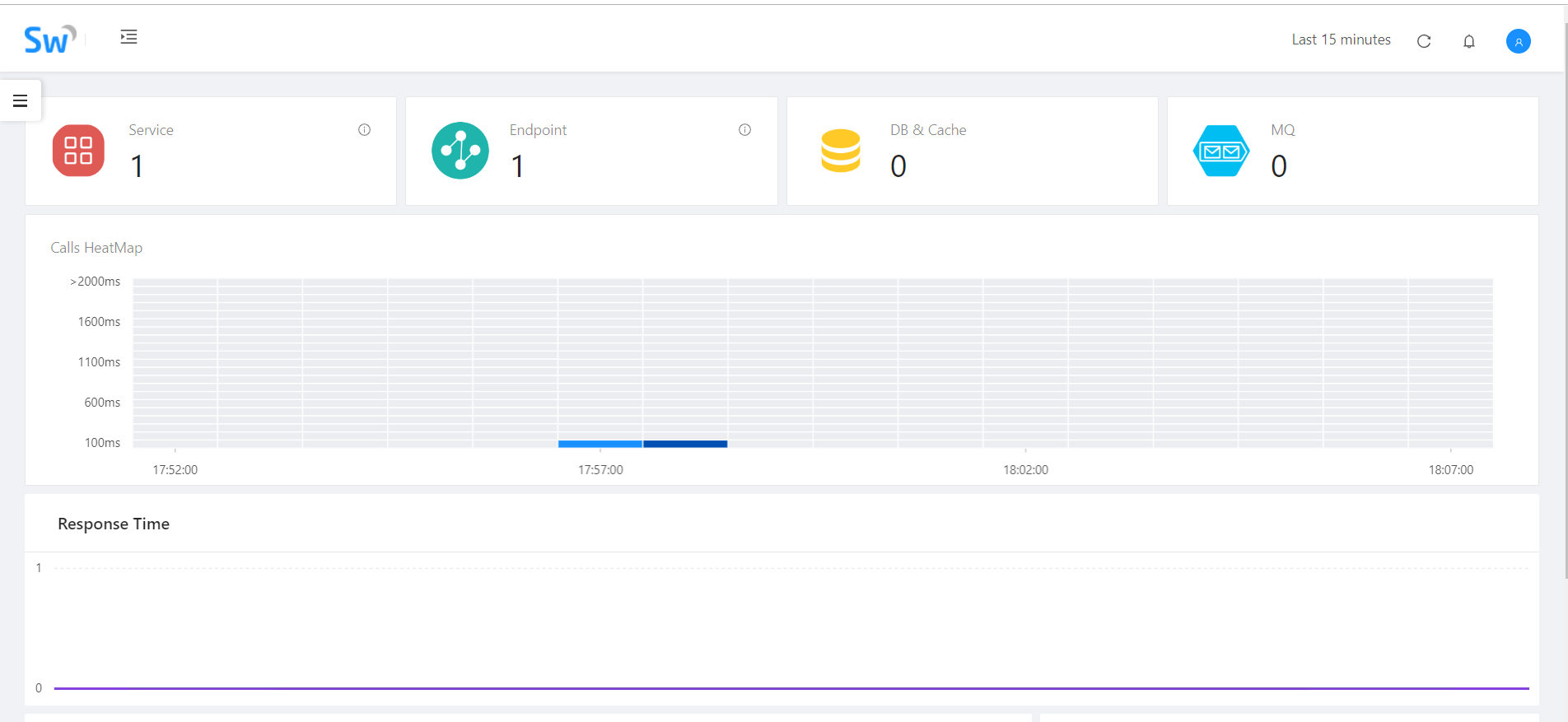
安装 SkyAPM.DotNet.CLI:
dotnet tool install -g SkyAPM.DotNet.CLI
2.在.net core中使用SkyWalking:
创建.net core API项目SkyWalking_Practice,通过NuGet引用SkyAPM.Agent.AspNetCore(最新版SkyWalking已改名SkyAPM)。
右键属性,在调试中添加环境变量:
ASPNETCORE_HOSTINGSTARTUPASSEMBLIES:SkyAPM.Agent.AspNetCore
SKYWALKING__SERVICENAME:SkyWalking_Practice(这里配置项目程序集名称)
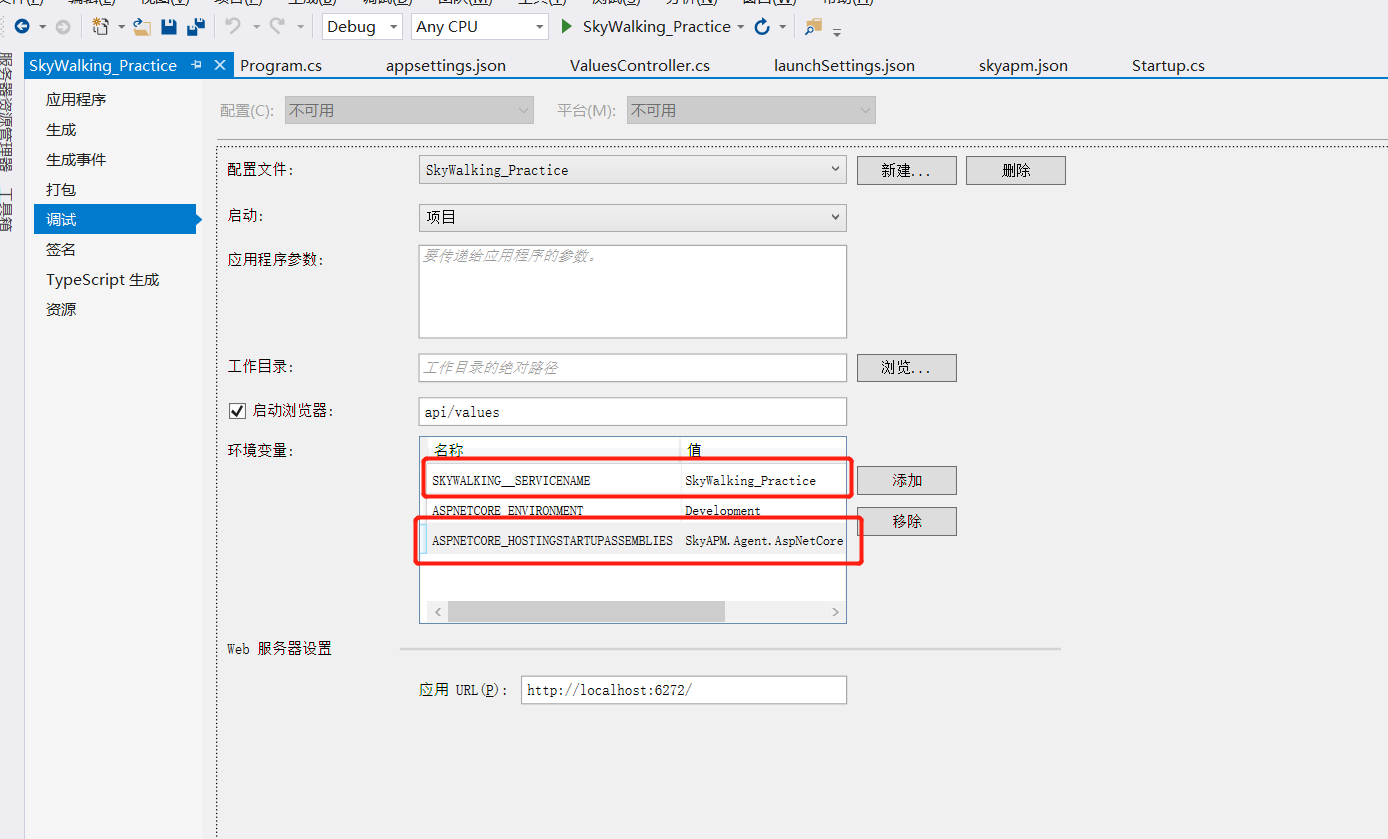
然后我们就需要配置SkyWalking了,配置方式有两种,一种是在Startup.cs的ConfigureServices中配置相关信息,另一种是通过配置文件的方式,本篇将通过配置文件的方式来实现:
在CMD命令行中cd到项目文件根目录,使用如下命令自动生成Json配置文件(11800端口是其数据采上报端口):
dotnet skyapm config SkyWalking_Practice localhost:11800
命令执行成功后会自动生成:skyapm.json,可以根据实际情况进行更改调整。
到这里配置环节就算完成了,我们可以直接运行当前项目,多访问几次后查看SkyWalking的UI,会看到对应访问数据:

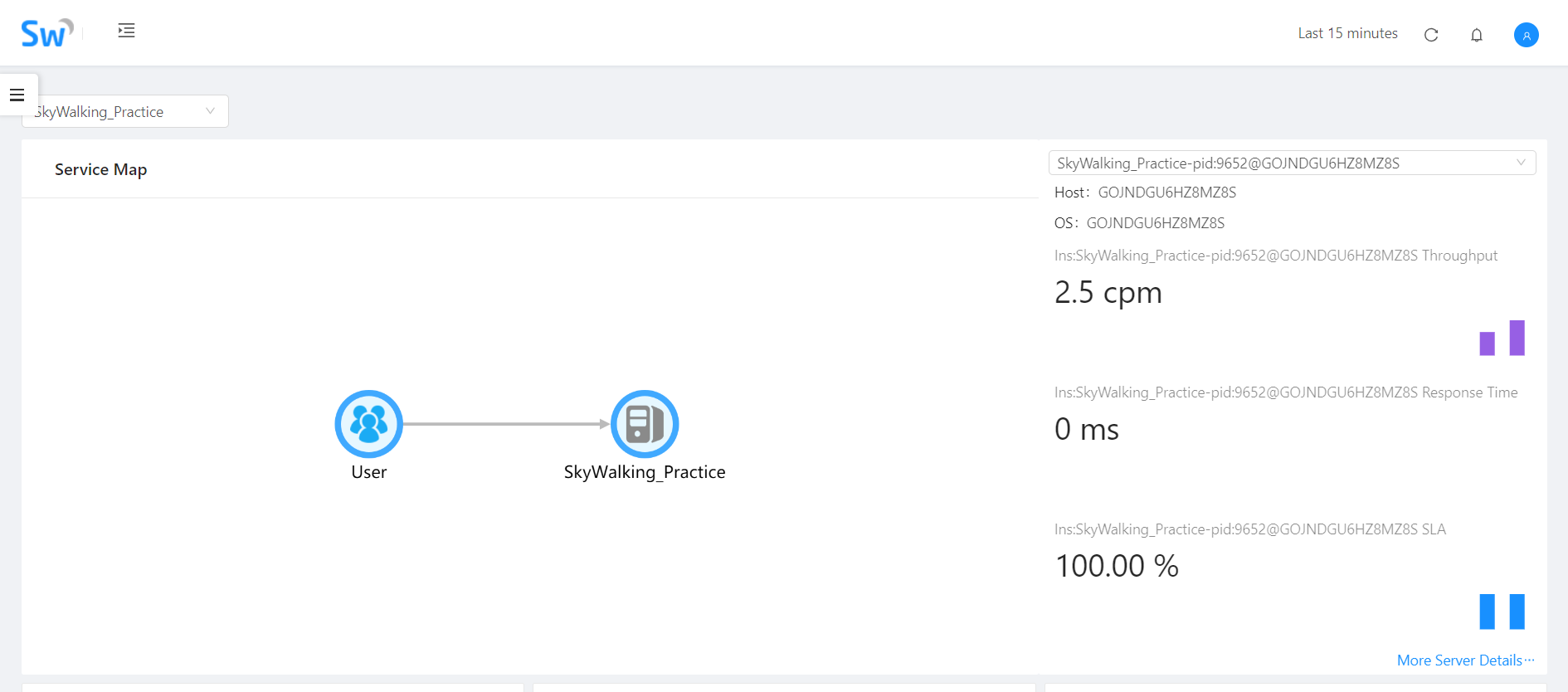
配置ElasticSearch作为存储程序
Skying的不同版本对于ES的版本是有要求的,6.X的SkyWalking要求使用6.X的ES,首先我们需要下载ES:https://www.elastic.co/cn/downloads/elasticsearch
下载完成后修改config文件夹下的elasticsearch.yml配置文件:
cluster.name: mi bootstrap.memory_lock: false network.host: localhost http.port: 9200
cluster.Name需要小写,之前大写报错。cluster.name需要和SkyWalking中的保持一致,默认CollectorDBCluster,大家可以自行修改。
贴一下完整配置当记录:
# ======================== Elasticsearch Configuration ========================= # # NOTE: Elasticsearch comes with reasonable defaults for most settings. # Before you set out to tweak and tune the configuration, make sure you # understand what are you trying to accomplish and the consequences. # # The primary way of configuring a node is via this file. This template lists # the most important settings you may want to configure for a production cluster. # # Please consult the documentation for further information on configuration options: # https://www.elastic.co/guide/en/elasticsearch/reference/index.html # # ---------------------------------- Cluster ----------------------------------- # # Use a descriptive name for your cluster: # cluster.name: mi # # ------------------------------------ Node ------------------------------------ # # Use a descriptive name for the node: # #node.name: node-1 # # Add custom attributes to the node: # #node.attr.rack: r1 # # ----------------------------------- Paths ------------------------------------ # # Path to directory where to store the data (separate multiple locations by comma): # #path.data: /path/to/data # # Path to log files: # #path.logs: /path/to/logs # # ----------------------------------- Memory ----------------------------------- # # Lock the memory on startup: # bootstrap.memory_lock: false # # Make sure that the heap size is set to about half the memory available # on the system and that the owner of the process is allowed to use this # limit. # # Elasticsearch performs poorly when the system is swapping the memory. # # ---------------------------------- Network ----------------------------------- # # Set the bind address to a specific IP (IPv4 or IPv6): # network.host: localhost # # Set a custom port for HTTP: # http.port: 9200 # # For more information, consult the network module documentation. # # --------------------------------- Discovery ---------------------------------- # # Pass an initial list of hosts to perform discovery when new node is started: # The default list of hosts is ["127.0.0.1", "[::1]"] # #discovery.zen.ping.unicast.hosts: ["host1", "host2"] # # Prevent the "split brain" by configuring the majority of nodes (total number of master-eligible nodes / 2 + 1): # #discovery.zen.minimum_master_nodes: # # For more information, consult the zen discovery module documentation. # # ---------------------------------- Gateway ----------------------------------- # # Block initial recovery after a full cluster restart until N nodes are started: # #gateway.recover_after_nodes: 3 # # For more information, consult the gateway module documentation. # # ---------------------------------- Various ----------------------------------- # # Require explicit names when deleting indices: # #action.destructive_requires_name: true
完成后启动ES,通过bin文件下的elasticsearch.bat启动,启动后访问 http://localhost:9200/:

ES启动之后我们需要修改下SkyWalking的配置以支持ES:
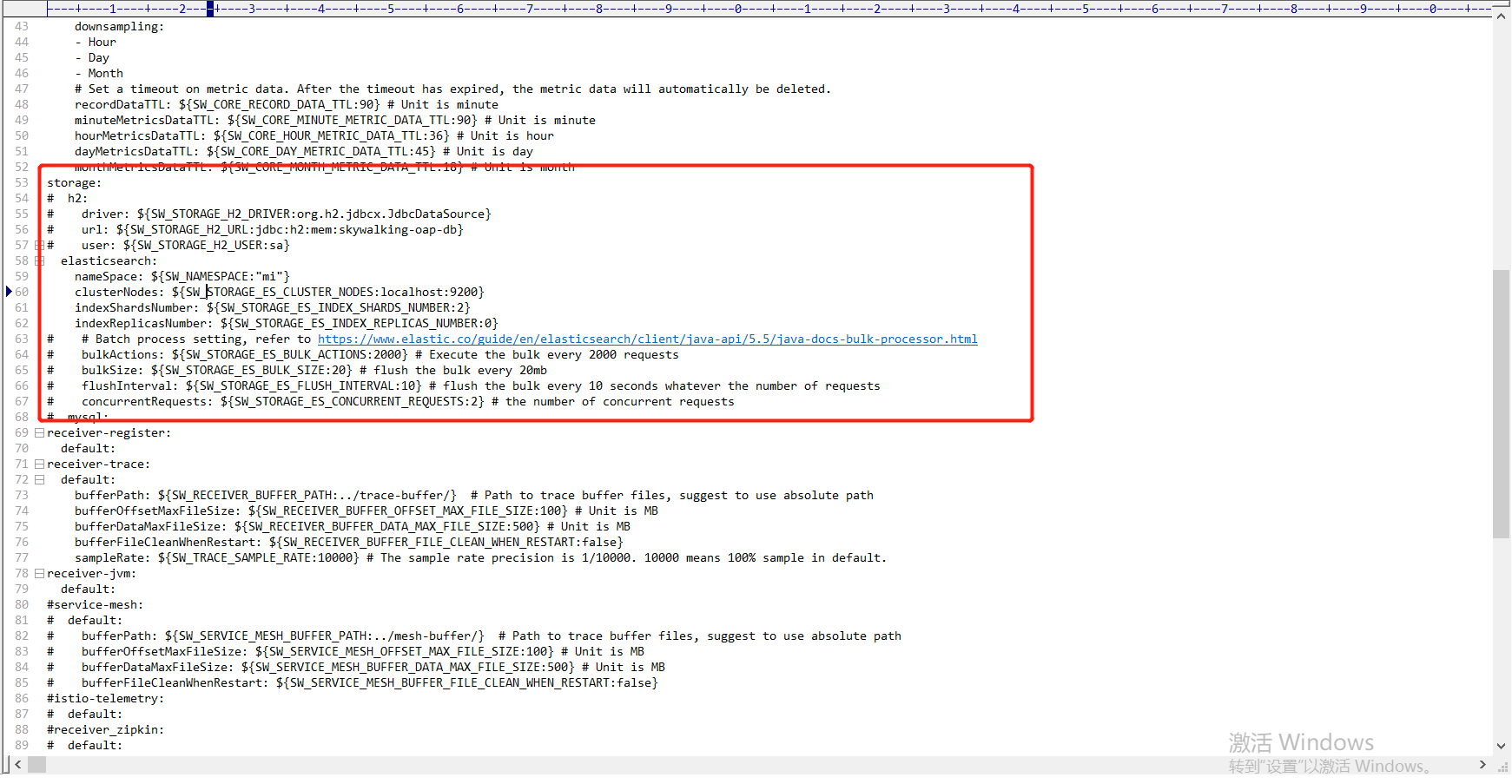
需要将nameSpace改成和ES中一致,这里也贴一下完整配置做个记录:
# Licensed to the Apache Software Foundation (ASF) under one # or more contributor license agreements. See the NOTICE file # distributed with this work for additional information # regarding copyright ownership. The ASF licenses this file # to you under the Apache License, Version 2.0 (the # "License"); you may not use this file except in compliance # with the License. You may obtain a copy of the License at # # http://www.apache.org/licenses/LICENSE-2.0 # # Unless required by applicable law or agreed to in writing, software # distributed under the License is distributed on an "AS IS" BASIS, # WITHOUT WARRANTIES OR CONDITIONS OF ANY KIND, either express or implied. # See the License for the specific language governing permissions and # limitations under the License. cluster: standalone: # Please check your ZooKeeper is 3.5+, However, it is also compatible with ZooKeeper 3.4.x. Replace the ZooKeeper 3.5+ # library the oap-libs folder with your ZooKeeper 3.4.x library. # zookeeper: # nameSpace: ${SW_NAMESPACE:""} # hostPort: ${SW_CLUSTER_ZK_HOST_PORT:localhost:2181} # #Retry Policy # baseSleepTimeMs: ${SW_CLUSTER_ZK_SLEEP_TIME:1000} # initial amount of time to wait between retries # maxRetries: ${SW_CLUSTER_ZK_MAX_RETRIES:3} # max number of times to retry # kubernetes: # watchTimeoutSeconds: ${SW_CLUSTER_K8S_WATCH_TIMEOUT:60} # namespace: ${SW_CLUSTER_K8S_NAMESPACE:default} # labelSelector: ${SW_CLUSTER_K8S_LABEL:app=collector,release=skywalking} # uidEnvName: ${SW_CLUSTER_K8S_UID:SKYWALKING_COLLECTOR_UID} # consul: # serviceName: ${SW_SERVICE_NAME:"SkyWalking_OAP_Cluster"} # Consul cluster nodes, example: 10.0.0.1:8500,10.0.0.2:8500,10.0.0.3:8500 # hostPort: ${SW_CLUSTER_CONSUL_HOST_PORT:localhost:8500} core: default: restHost: ${SW_CORE_REST_HOST:0.0.0.0} restPort: ${SW_CORE_REST_PORT:12800} restContextPath: ${SW_CORE_REST_CONTEXT_PATH:/} gRPCHost: ${SW_CORE_GRPC_HOST:0.0.0.0} gRPCPort: ${SW_CORE_GRPC_PORT:11800} downsampling: - Hour - Day - Month # Set a timeout on metric data. After the timeout has expired, the metric data will automatically be deleted. recordDataTTL: ${SW_CORE_RECORD_DATA_TTL:90} # Unit is minute minuteMetricsDataTTL: ${SW_CORE_MINUTE_METRIC_DATA_TTL:90} # Unit is minute hourMetricsDataTTL: ${SW_CORE_HOUR_METRIC_DATA_TTL:36} # Unit is hour dayMetricsDataTTL: ${SW_CORE_DAY_METRIC_DATA_TTL:45} # Unit is day monthMetricsDataTTL: ${SW_CORE_MONTH_METRIC_DATA_TTL:18} # Unit is month storage: # h2: # driver: ${SW_STORAGE_H2_DRIVER:org.h2.jdbcx.JdbcDataSource} # url: ${SW_STORAGE_H2_URL:jdbc:h2:mem:skywalking-oap-db} # user: ${SW_STORAGE_H2_USER:sa} elasticsearch: nameSpace: ${SW_NAMESPACE:"mi"} clusterNodes: ${SW_STORAGE_ES_CLUSTER_NODES:localhost:9200} indexShardsNumber: ${SW_STORAGE_ES_INDEX_SHARDS_NUMBER:2} indexReplicasNumber: ${SW_STORAGE_ES_INDEX_REPLICAS_NUMBER:0} # # Batch process setting, refer to https://www.elastic.co/guide/en/elasticsearch/client/java-api/5.5/java-docs-bulk-processor.html # bulkActions: ${SW_STORAGE_ES_BULK_ACTIONS:2000} # Execute the bulk every 2000 requests # bulkSize: ${SW_STORAGE_ES_BULK_SIZE:20} # flush the bulk every 20mb # flushInterval: ${SW_STORAGE_ES_FLUSH_INTERVAL:10} # flush the bulk every 10 seconds whatever the number of requests # concurrentRequests: ${SW_STORAGE_ES_CONCURRENT_REQUESTS:2} # the number of concurrent requests # mysql: receiver-register: default: receiver-trace: default: bufferPath: ${SW_RECEIVER_BUFFER_PATH:../trace-buffer/} # Path to trace buffer files, suggest to use absolute path bufferOffsetMaxFileSize: ${SW_RECEIVER_BUFFER_OFFSET_MAX_FILE_SIZE:100} # Unit is MB bufferDataMaxFileSize: ${SW_RECEIVER_BUFFER_DATA_MAX_FILE_SIZE:500} # Unit is MB bufferFileCleanWhenRestart: ${SW_RECEIVER_BUFFER_FILE_CLEAN_WHEN_RESTART:false} sampleRate: ${SW_TRACE_SAMPLE_RATE:10000} # The sample rate precision is 1/10000. 10000 means 100% sample in default. receiver-jvm: default: #service-mesh: # default: # bufferPath: ${SW_SERVICE_MESH_BUFFER_PATH:../mesh-buffer/} # Path to trace buffer files, suggest to use absolute path # bufferOffsetMaxFileSize: ${SW_SERVICE_MESH_OFFSET_MAX_FILE_SIZE:100} # Unit is MB # bufferDataMaxFileSize: ${SW_SERVICE_MESH_BUFFER_DATA_MAX_FILE_SIZE:500} # Unit is MB # bufferFileCleanWhenRestart: ${SW_SERVICE_MESH_BUFFER_FILE_CLEAN_WHEN_RESTART:false} #istio-telemetry: # default: #receiver_zipkin: # default: # host: ${SW_RECEIVER_ZIPKIN_HOST:0.0.0.0} # port: ${SW_RECEIVER_ZIPKIN_PORT:9411} # contextPath: ${SW_RECEIVER_ZIPKIN_CONTEXT_PATH:/} query: graphql: path: ${SW_QUERY_GRAPHQL_PATH:/graphql} alarm: default: telemetry: none:
然后通过bin文件夹下的startup.bat批处理命令启动SkyWalking,然后访问http://localhost:8080能够出现UI界面则正常,然后启动我们的.net core API项目,出现数据:
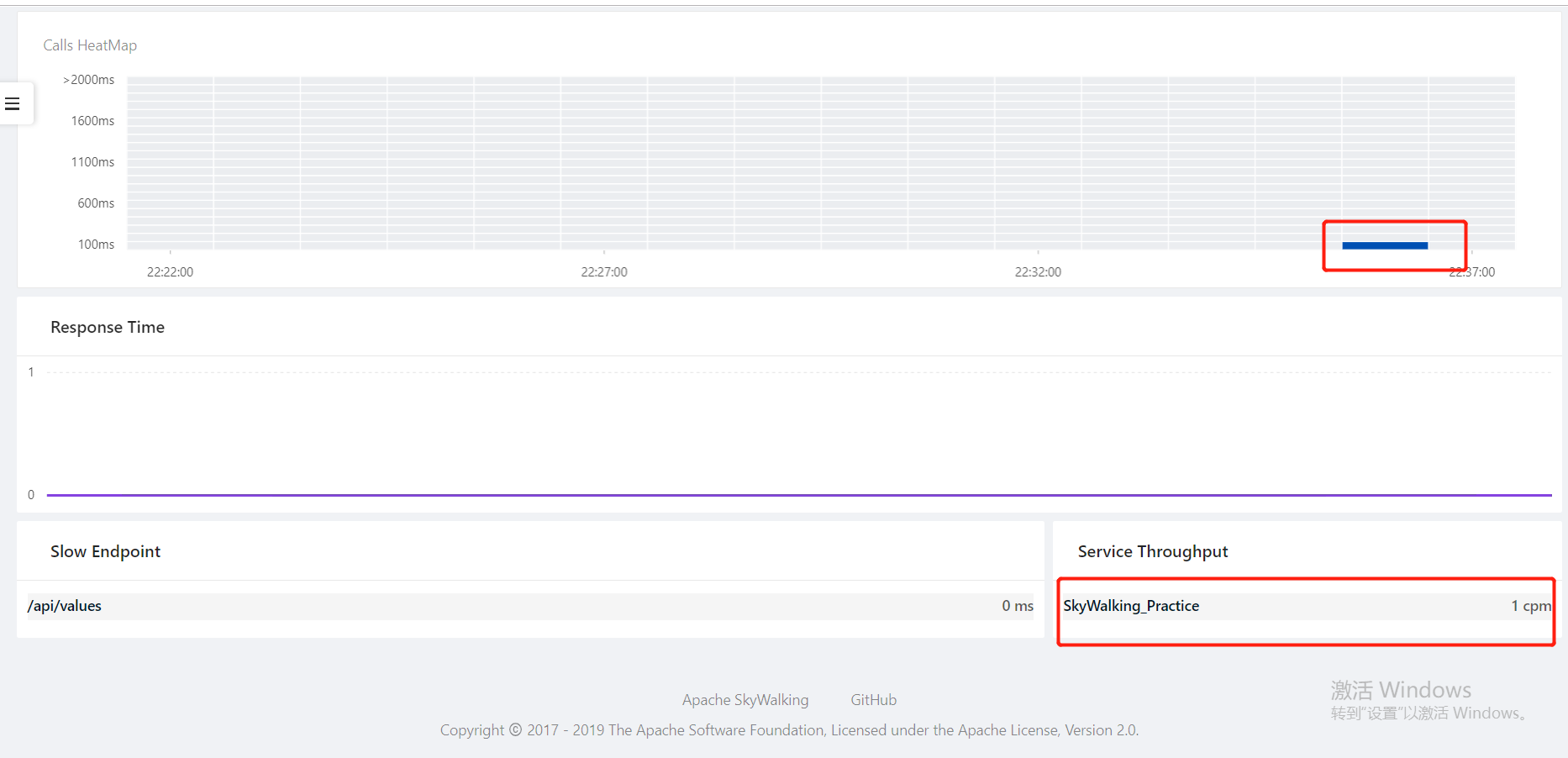
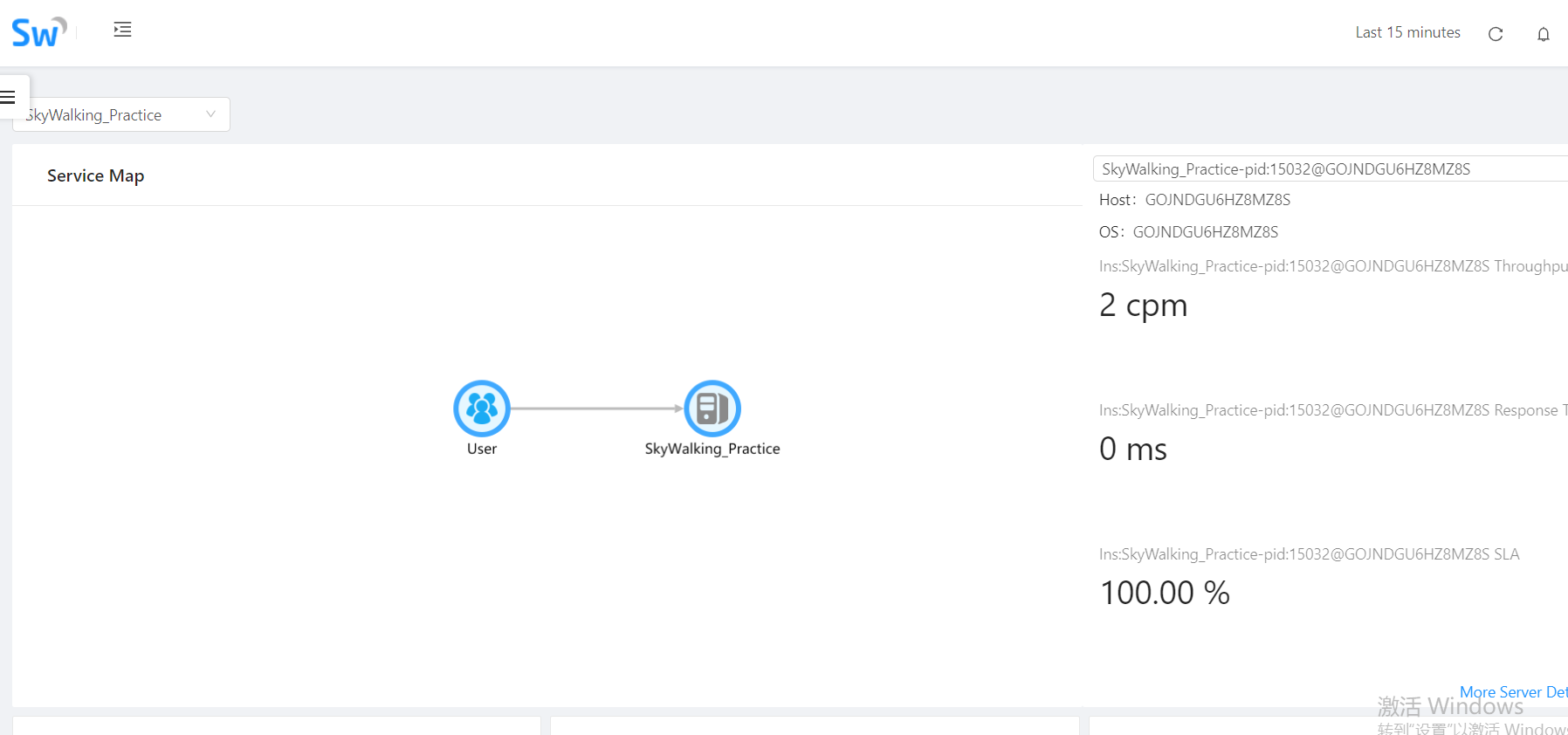
OK,到此完成。